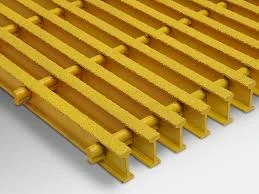loading...
- No. 9, Xingyuan South Street, Dongwaihuan Road, Zaoqiang County, Hengshui, Hebei, China
- admin@zjcomposites.com
- +86 15097380338
- Welcome to visit our website!
Design and Applications of Glass Fiber Reinforced Plastic Structures in Modern Engineering
Glass Reinforced Plastic Structures An Overview
Glass Reinforced Plastic (GRP), commonly known as fiberglass, is a composite material made from a polymer matrix reinforced with glass fibers. This innovative combination offers a range of advantages over traditional materials, including metal and wood, and is increasingly used in various structural applications across multiple industries. In this article, we delve into the characteristics, manufacturing processes, benefits, and applications of GRP structures.
Characteristics of GRP
GRP exhibits several remarkable properties that make it an ideal choice for construction and design. Firstly, it is lightweight compared to metals, which reduces the load on supporting structures and foundations. Despite its lightness, GRP is known for its high strength-to-weight ratio, providing the mechanical strength necessary for various structural applications.
Moreover, GRP is highly resistant to corrosion, moisture, and chemicals. This makes it suitable for environments where traditional materials might degrade over time. Additionally, GRP has excellent thermal and electrical insulation properties, adding to its versatility.
Manufacturing Processes
The production of GRP structures typically involves several key processes. One of the most common methods is the hand lay-up technique, where layers of resin-saturated glass fibers are laid into a mold by hand. This method is favored for its simplicity and effectiveness when creating complex shapes.
Another prevalent technique is the spray-up process, where glass fibers and resin are simultaneously sprayed into a mold. This is ideal for larger productions, as it allows for quicker material application and the creation of thicker panels.
For more precise applications, methods such as filament winding or resin transfer molding (RTM) are employed. Filament winding involves winding glass strands around a rotating mandrel, while RTM uses a closed mold to inject resin into the glass fiber, ensuring an even distribution and reducing excess material.
Benefits of GRP Structures
glass reinforced plastic structure

The use of GRP in construction offers a multitude of advantages. One of the most significant benefits is its durability. GRP structures can withstand harsh environmental conditions without compromising integrity, making them ideal for coastal and industrial applications.
Another key advantage is design flexibility. GRP can be molded into intricate shapes and can be manufactured in a variety of colors and finishes, allowing architects and designers creative freedom. Additionally, GRP components can be prefabricated, leading to faster construction times and reduced labor costs on-site.
The longevity of GRP structures is another considerable benefit. With proper care and maintenance, GRP can last for many decades without significant degradation, which is a crucial factor in life-cycle cost analysis.
Applications of GRP
The applications of glass reinforced plastic are diverse, spanning a wide array of industries. In construction, GRP is commonly used for structural components such as beams, columns, and panels. It is also utilized in roofing systems and as an alternative to traditional materials for cladding and facades.
In the transportation industry, GRP is employed in vehicle bodies, boat hulls, and components for aircraft, where lightweight and durability are critical. Furthermore, the electrical and telecommunications sectors make extensive use of GRP for poles, enclosures, and other structural components due to its insulating properties.
In addition, GRP plays a vital role in the manufacture of tanks, pipes, and other equipment in the chemical processing and water treatment industries, where corrosion resistance is paramount.
Conclusion
Glass Reinforced Plastic structures are redefining the landscape of modern construction and design, providing a blend of strength, versatility, and longevity. As industries continue to seek sustainable and efficient alternatives to traditional materials, GRP stands out as a robust solution that not only meets current demands but also drives innovation for future developments. With ongoing advancements in manufacturing techniques and material properties, the potential applications of GRP are virtually limitless, promising exciting prospects for engineers and designers alike.
-
The Expansive Industrial Reign of FRP Pressure VesselsNewsAug.22,2025
-
Manufacturing Premium FRP Square Pipes for Global Wholesale ExcellenceNewsAug.22,2025
-
Strategic Applications for FRP Grating SolutionsNewsAug.22,2025
-
Material Science Forging GRP Water Tank LongevityNewsAug.22,2025
-
The Engineered Excellence: Material Science Behind FRP Railing SystemsNewsAug.22,2025
-
How Digital Pultrusion Revolutionizes FRP Profile WholesalingNewsAug.22,2025
-
The Rise of FRP Profiles: Strong, Lightweight, and Built to LastNewsJul.14,2025
